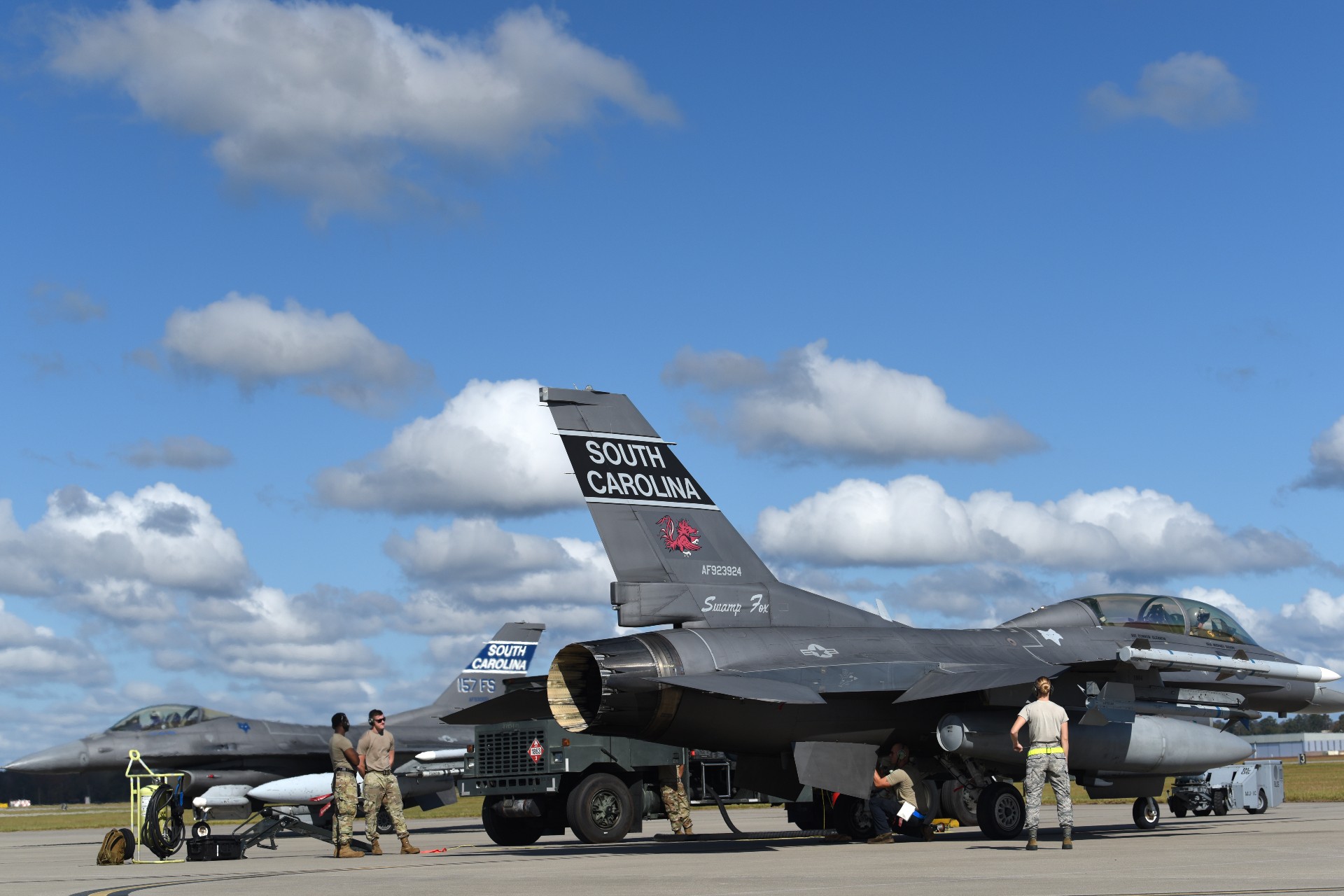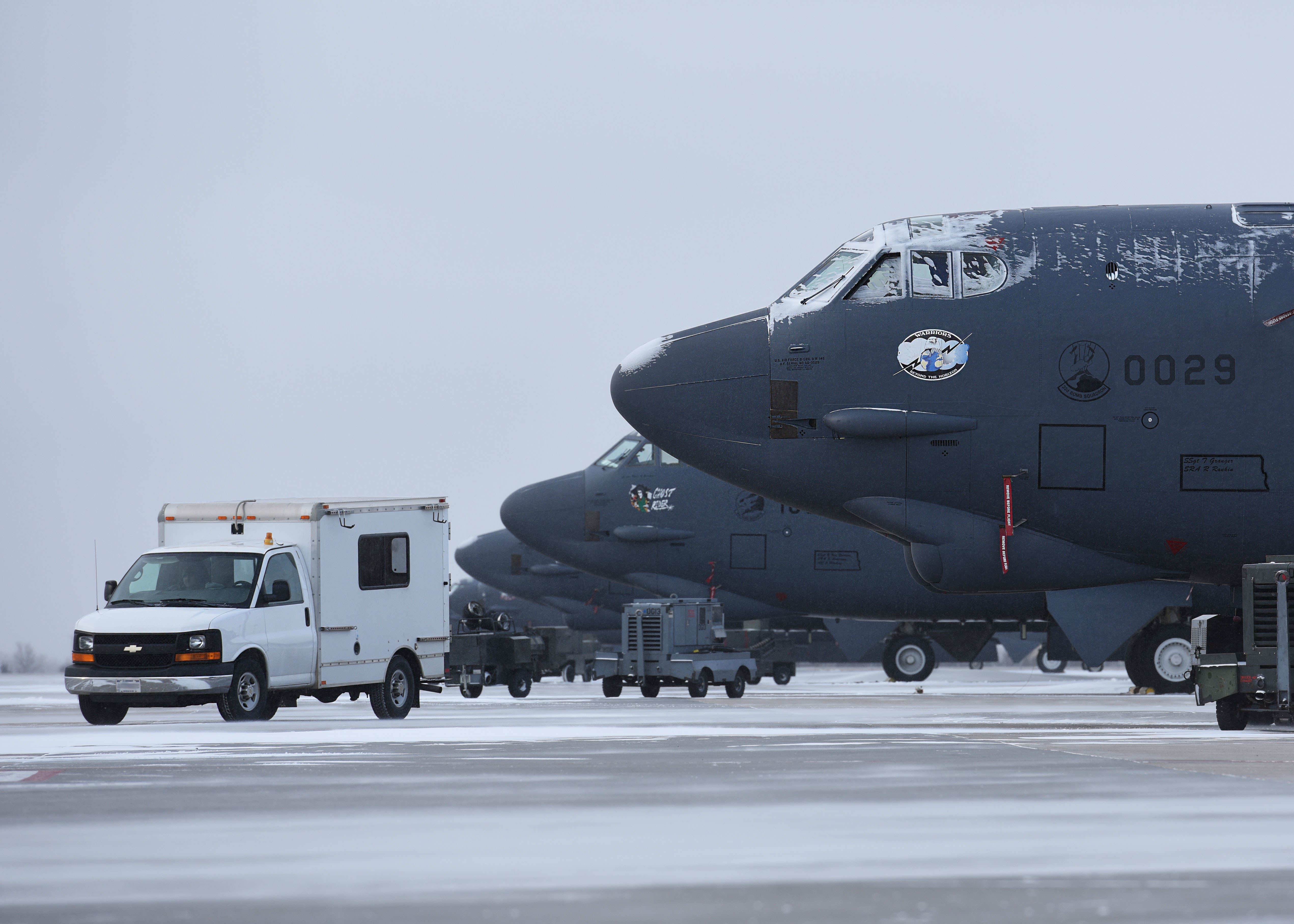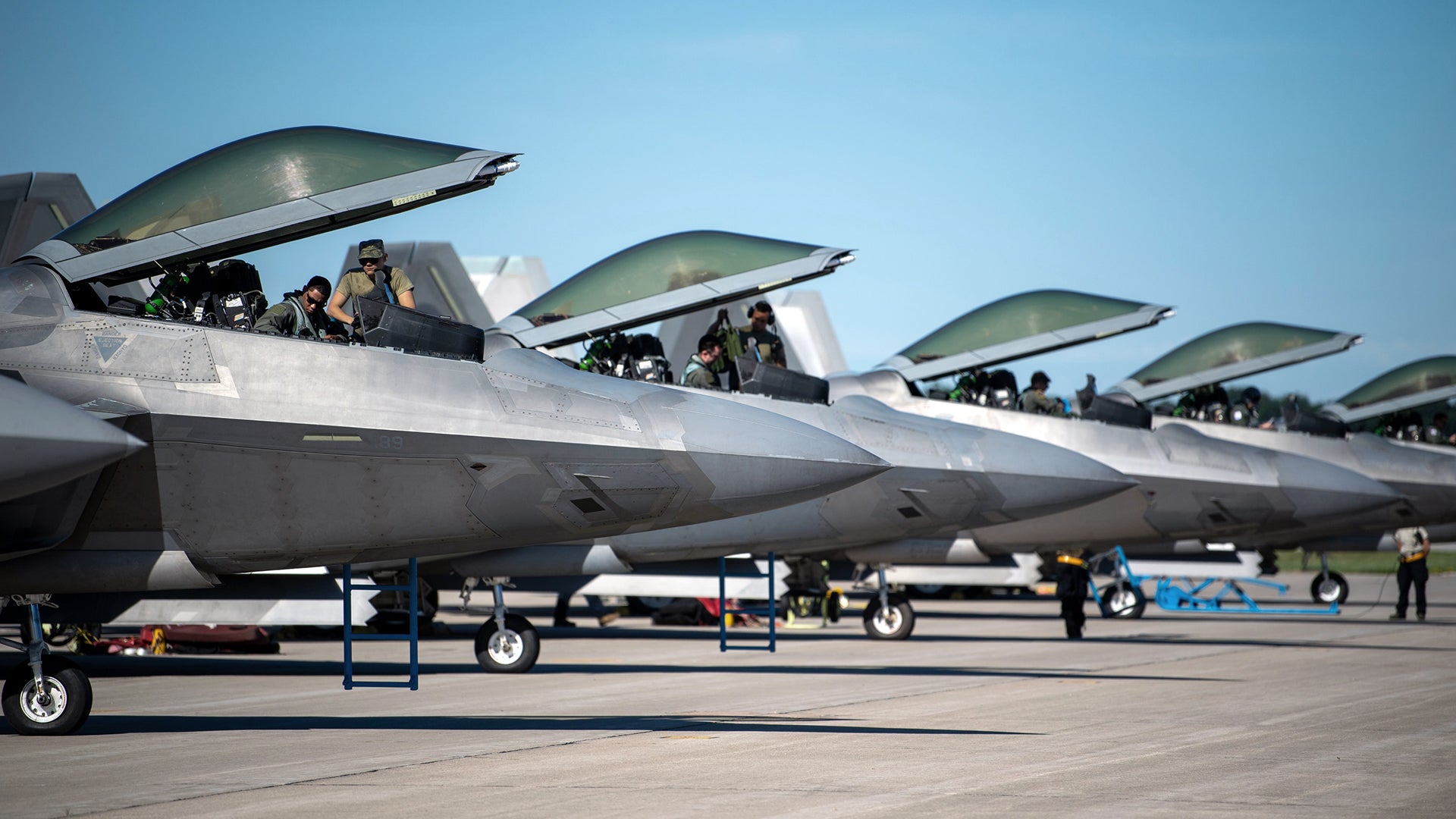The U.S. Air Force (USAF) is asking for outside ideas on how to secure its flightlines at permanent and temporary air bases both at home and abroad. AFWERX, a USAF program aimed at bringing innovation and entrepreneurs to Air Force programs, has announced a set of challenges as part of its Revolutionizing USAF Flightline Operations initiative. The challenge seeks proposals for new ideas related to flightline security operations, including the increasingly pressing goal of neutralizing unmanned aerial systems (UAS) that intrude into these highly sensitive areas.
That goal is part of the AFWERX Flightline Security Challenge which is reaching out to academia, the private sector, and other government agencies for novel solutions related to protecting flightlines at its air bases from unknown or potentially hostile drones. Aside from the Flightline Security Challenge, AFWERX is also accepting proposals for innovative ideas in Aircraft Maintenance Operations and Airfield Maintenance & Repair. AFWERX is accepting white paper proposals through July 8.

When it comes to its Flightline Security Challenge, AFWERX states that “aerial threats, including civilian and enemy drones, cause operational interferences and disruptions, lead to scheduling delays and contribute to excess use of Air Force resources” before asking “How can [the USAF] better secure the flightline and help USAF airmen and maintainers stay ahead of the curve?” Some USAF bases like Ramstein Air Force Base have even developed their own “laboratories” for developing new base defense concepts along these same lines.
Most discussions of defense against unmanned aerial vehicles tend to focus on the kinetic threats posed by small drones, but AFWERX’s announcement also mentions the threat small UAS pose in terms of “data leaks caused by unauthorized surveillance.” Small drones can be fitted with a variety of sensor systems that can turn them into the perfect tool for electromagnetic signals intelligence surveillance used to probe defenses and communication networks. Off-the-shelf, inexpensive drone systems can even be used to surveil facilities and military hardware, even peering through windows in the the interiors of sensitive installations with powerful optical cameras.
AFWERX also mentions “leveraging automation to strengthen the airfield perimeter security and streamline manual processes” as part of the Flightline Security Challenge. Some of these initiatives have already take shape at Tyndall, which has deployed autonomous “robot dogs” to carry out some perimeter security tasks on their own.
One of the ways AFWERX’s challenge seeks to improve flightline security is by looking at new counter-unmanned aerial system (C-UAS) technologies. Drones have flown dangerously close to flightlines at several major domestic military installations in the past, including Langley AFB, Davis-Monthan AFB, and even Joint Base Andrews. Those are just the incidents we know about, by every indication the problem is far more widespread.
It’s not just military bases that are seeing their flightline operations threatened by UAV activity. England’s Gatwick Airport, the United Kingdom’s second busiest airport, was shut down for three days during the 2018 holiday season due to sightings of unknown drones in its airspace, affecting some 140,000 passengers and 1,000 flights. Since then the problem has exploded in scope.

Mark Shackley, security forces program manager at Tyndall Air Force Base’s Program Management Office, said the AFWERX Flightline Security Challenge could help revolutionize base security from front to back through bringing more automation into many different operations:
We expect the use of advanced data analytics and automation to kind of go hand in hand, but it is also more into the AI [artificial intelligence] and machine learning-type capabilities to see if it is something that we can tie into existing physical security measures and sensors. And there may be some new technology that is essential, that we haven’t thought of yet that can be employed, such as something that could be put into the ground, or maybe it’s in the paint that goes around the restricted area that transmits.
When it comes to defeating threats from unmanned aerial systems, Shackley says that the AFWERX challenge could offer new ideas “not only for detection, but for a defeat capability,” adding that flightline security forces “would prefer something that is kinetic, that would be awesome, but we know right now that kinetic counter-UAS measures don’t seem to be really mature enough yet for state-side use.”
In addition to tried-and-true air defense systems like surface-to-air missiles and anti-aircraft guns, many new kinetic drone intercept technologies have been demonstrated in recent years, including “hard kill” attack drones that ram hostile UASs, and a concept from DARPA that shoots “strong, stringy streamers” that foul drones’ propulsion systems. There have been multiple systems developed that use high-power microwaves to defeat drones, either emitted from containerized systems or from other drones. Lasers are another option that will soon hit the field operationally.

Despite the rapidly growing number of kinetic C-UAS solutions, it’s unclear how widespread these could be deployed to secure flightlines at installations in close proximity to populated civilian areas. Knocking anything out of the sky, especially with some form of kinetic effector, creates the potential for collateral damage over populated areas. For that reason, non-kinetic solutions are most often deployed in such areas, as was the case recently in Brussels during a NATO summit when Belgian Federal Police were seen wielding anti-drone weaponry designed to disable drones. The United States Marine Corps already has “soft-kill” electronic warfare attack systems deployed to detect and disable drones via electronic warfare.
These types of anti-drone systems work primarily by severing the command and control links between drones and their operators, although some non-kinetic solutions like high-power microwaves use directed energy to “fry” the circuitry inside UAVs. Lasers that can burn holes through drones are also an option, as are a wide variety of jamming technologies. However, even directed energy and electronic attacks have collateral damage risks if these systems accidentally interfere with or disable civilian electronics or communications. Any uses of directed energy C-UAS systems close to populated areas would have to be carefully deconflicted with air traffic at airports and other critical infrastructure, particularly due to the fact that many U.S. military air bases are collocated with civilian airports.
Despite the risks associated with any C-UAS system, these types of defenses are increasingly needed at America’s air bases. We have been sounding the alarm on the risks posed by low-end aerial threats for years, as in this 2017 feature in which we specifically highlighted the threats small drones pose to aircraft sitting on flightlines at air bases:
Similar swarming strikes could be unleashed behind the front lines as well, with hugely expensive and low density/high demand combat aircraft being especially vulnerable to this sort of tactic—something General James Holmes alluded to inadvertently while speaking to the Air Force Association, stating:
“Imagine a world where somebody flies a couple hundred of those and flies one down the intake of my F-22s with just a small weapon on it.”
Actually, it would be even easier to just strike the jets as they sit idle and vulnerable on the flight line. One swarm could see a whole squadron of tightly packed fighters destroyed without even having a chance to fight back.
For many different reasons, it is far more preferable to destroy fighters on the ground than in the air. The fact that this can now be done in such a low cost and low risk way thanks to even commercially-available drones, and potentially far from the front lines of a conflict, is very troubling. We have seen this attempted already in January 2018 when Russia’s Khmeimim Air Base in Syria was attacked by 13 crude fixed-wing drones armed with improvised explosives. Even terrorists or political actors could destroy billions worth of military hardware at a very low cost with simple off-the-shelf systems if flightline security solutions aren’t found and deployed in time.
Whatever solutions end up being chosen in AFWERX’s Flightline Security Challenge, the very fact that the USAF is looking to industry and academia for ideas on how to protect its installations from emerging asymmetric threats shows just how significant the gaps in the U.S. military’s short-range air defenses are when it comes to small drones and the threats they pose to flightline security.
Contact the author: Brett@TheDrive.com
